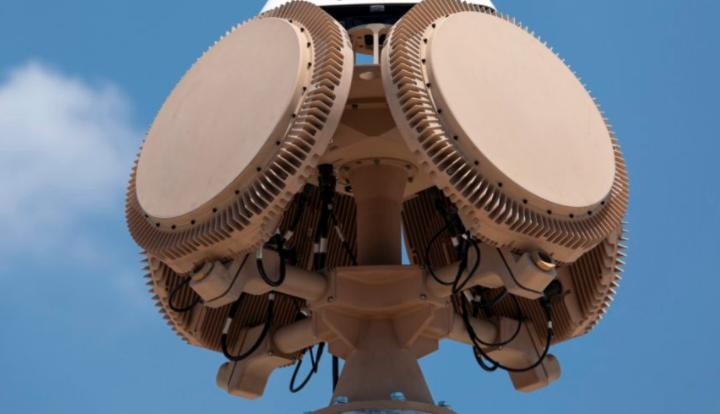When selecting a radar, there are two types that are frequently used: S-band and X-band. Each one has its own strengths and weaknesses so the question becomes “Which one do I choose?”

Multi-mission active electronically-scanned array (AESA) 4D pulse Doppler systems rapidly detect, track and classify all relevant threats – small arms, RPGs, ATGMs, and tank rounds.
What is S-Band Radar?
S-band radar is better for special applications and long-range detection. It is used more for surveillance as it provides better coverage. The largest use of this band is by WiFi networks but it can also be used in garage door openers, microwaves, keyless vehicle locks, and Bluetooth wireless headphones.
S-band radar is capable of operating accurately even in severe weather conditions, making it useful for civilian and military aircraft navigation. That makes surveillance easier since you won’t have to worry as much about weather conditions. A benefit of using S-band radars is that it is better for hemispheric coverage.
What is X-Band Radar?
X-band radar has a smaller antenna and a higher target resolution. It can be used for specific targeting operations. X-band radar can also detect smaller objects because it is more sensitive. This is due to the smaller wavelength. A shorter wavelength also allows for higher-resolution imaging for target identification.
Large airplanes are one example of how X-band radar is used. They are equipped with these radars to detect turbulence and other weather phenomena. X-band technology is also used for civil, military, and government settings for tasks such as:
- Weather Monitoring
- Air Traffic Control
- Maritime Vessel Traffic Control
- Defense Tracking
- Vehicle Speed Detection for Law Enforcement
Differences Between S- and X-band Radar
One of the major differences between S- and X-band radars is they operate on different frequencies. S-band is on 2-4 GHz. X-band is 8-12 GHz.
Another difference is physical size. X-band radar elements are typically spaced closer together than S-band. The spacing between antenna elements on a radar is designed to be less than 1/2 of the wavelength to avoid ambiguities. Higher frequencies have shorter wavelengths, and X-band is higher in frequency than S-band. Thus you might expect that a radar designer would have X-band antenna elements closer together.
For example, the majority of marine radars operate on X-band because the smaller antennas fit on most boats and provide better target resolution.
S-band radars are often used for surveillance situations, since they can operate accurately in the midst of heavy precipitation or cloud cover. You can’t control the weather in a warzone so you need something that is dependable to help control what you can.
Applications for S- and X-band Radar
Ultimately it’s not about pitting S- versus X-band technology against each other. The versatility of having both working in tandem shouldn’t be overlooked. If one radar fails then personnel can transition to the second as a backup. That way there will always be a radar working.
The Navy, in particular, has embraced S-band technology. One of the features of newly-built warships is that they are equipped with S-band radars. This helps update their systems overall to generate more energy and sensitive receivers. This enables more precise tracking of threats, both aerial and surface, at greater distances.
Why Our Radars Use S-Band

One of the benefits of S-band is that it operates in all-weather performance conditions and it can tell apart between different threats. This is why DRS RADA Technologies incorporates it into their radars. S-band radar can see through the clutter and not mistake it for something else. Thus reducing the risk to warfighters.
S-band radar can protect people against aerial threats, like drones. It can isolate and track them, transmitting the information back to the base so the threat can be eliminated.
A downside of X-band radars is their sensitivity, which causes them to pick up false signals known as clutter. Typical sources of clutter are birds, trees, bodies of water, and different types of weather like rain, snow, or fog. This can cause false alarms in a radar system and limit the ability to process true target detections.
Radars That Have an S-Band Antenna
There are several DRS RADA Technologies radar options for you to choose from that use an S-band frequency.
- Improved and Enhanced Multi-Mission Hemispheric Radar (ieMHR)
- Multi-Mission Hemispheric Radar (MHR)
- Extended Multi-Mission Hemispheric Radar (exMHR)
- Advanced Compact Hemispheric Radar (aCHR)
- Enhanced Compact Hemispheric Radar (eCHR)
Need the most technologically advanced radars? Learn more about our range of tactical radars designed to help you complete your mission safely.